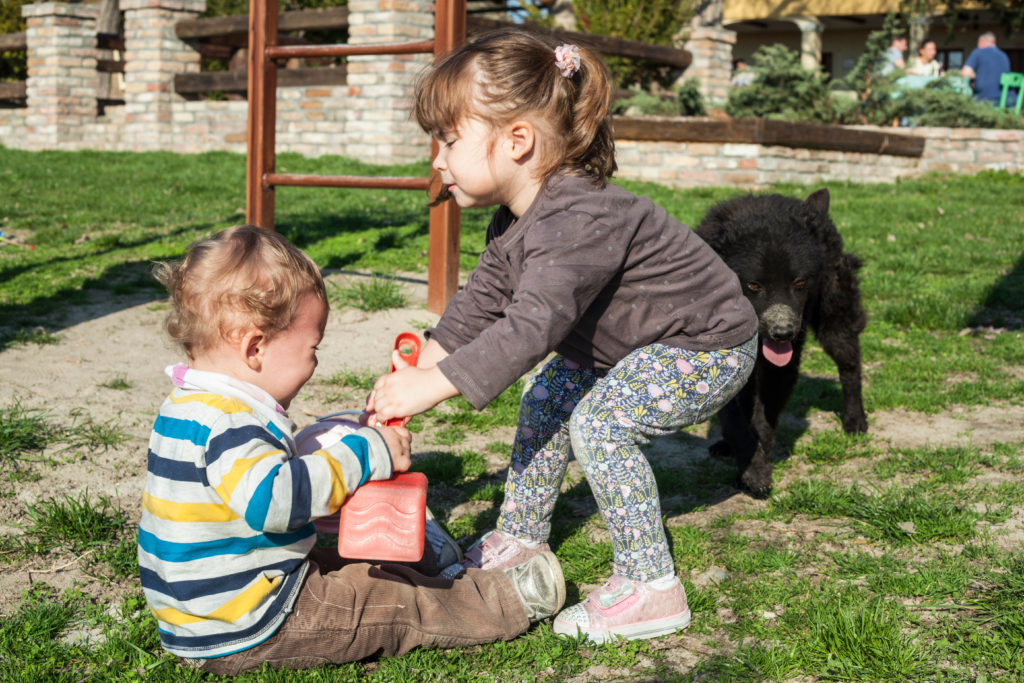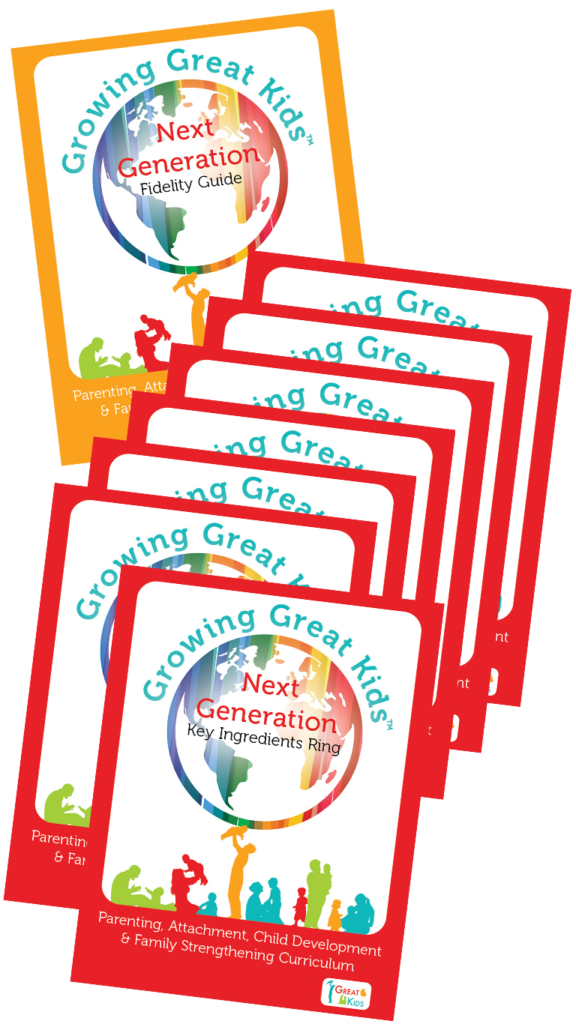
Before we begin our discussion on sharing, I thought we could spend some time exploring developmental milestones. I know this might seem a little off topic, but I promise this all connects to sharing. Let’s start with what comes to your mind when you think about milestones that infants and toddlers achieve. You might imagine an infant learning how to take their very first steps or a young child learning to use the potty all on their own. There are so many wonderful milestones that parents look forward to, but one milestone that is often forgotten is learning to share. Child development specialists tell us that learning to take turns is considered a social milestone (Healthy Families British Columbia (HFBC), 2017).
So, what does this mean exactly? Well, just like infants cannot learn to walk until they are physically ready, children cannot learn to share until they are socially ready. This means it is completely normal for a two-year-old to swoop all their toys into their arms and shout, “No! Mine!” when they see another toddler approaching their toys. In fact, it is a part of typical social development for children to struggle with sharing. Toddlers might even push or grab to protect their toys and announce that they are not interested in sharing (HFBC, 2017). As odd as it might seem, parents can view these types of behaviors as a social milestone for toddlers.
As some of you read this, you might be thinking, “Even if sharing is a milestone, I can still help my child learn to share.” You are exactly right. Parents play a crucial role in showing their toddlers HOW to share. However, if you are a parent or have worked with children, you understand how challenging it can be to help a toddler learn a new skill, especially if they are not ready. Imagine a child who begins toilet teaching before they are ready. They might have lots of accidents, forget to tell someone they have to potty or simply be confused by the process of having to use the toilet. In this instance, parents might decide to try supporting their child with potty training when they are a little older and more ready. Sharing is much like toilet teaching in that until a child is ready to share, they will probably be confused with the idea.
Of course, parents can still begin building the foundation for sharing if they understand when children will be able achieve the idea of taking turns. Let’s jump into this research and learn about when the experts say children can understand HOW to share. The American Academy of Pediatrics (AAP) (n.d.), tells us that children who are younger than 3 CANNOT understand the idea of sharing. In fact, child development specialists explain that sharing skills usually do not appear until around 3.5 to 4 years of age (MacLaughlin, 2017). So, why is that toddlers cannot share?
When I started researching this topic, I learned there are a few reasons that toddlers struggle with sharing. According to Lindert (2012), toddlers lack the ability to SAY what they want. Toddlers are also still developing their independence, which means they are learning how to make decisions. Let’s start with the language piece of this information. Around the developmental age of 18-24 months, children can begin using two to three word sentences. (HFBC, 2017). This is a huge milestone for toddlers but being able to form only very short sentences creates a barrier for children when it comes to sharing.
Let’s imagine a scenario to better understand how sharing and language development are connected. Picture a two-year-old named Carter who proudly walks into daycare with their new stuffed bear. Little two-year-old Lucy sees the bear and shouts, “Me want it!” Carter of course does not want to just give Lucy the new bear, so Lucy begins to pull the bear from Carter’s hands as Carter screams, “No! My bear!” This seems like a typical interaction that we have all probably witnessed before. In this scenario, the children could only use three-word sentences. Even though adults are used to using complex sentences to explain what they need, we forget toddlers cannot do this quite yet. This means they do not have the language ability to talk about how to share things like a new stuffed animal.
As mentioned before, Lindert (2012) also reminds us that toddlers are learning how to be independent. Toddlers are now able to make some of their own choices, like which toy they want to play with. However, they are not able to understand that all their friends do not share the same viewpoint as them. This means that little Lucy believed that EVERYONE, including Carter should have understood how badly she wanted the bear. You might be asking yourself why toddlers assume everyone knows how what they are thinking and feeling…this is a great question.
Child development specialists tell us that young children are still learning about empathy, which means they do not have the ability to try to understand others’ feel. (MacLaughlin, 2017). This means that Carter and Lucy could not step into each other’s shoes and ask one another how the stuffed bear made them feel. Instead, they could only focus on their own feelings. It can be overwhelming for parents to learn that their toddlers are still developing empathy skills. However, parents can be assured that there are still things they can do to help their toddlers learn how to share as they grow older.
Some of the things that parents can try are:
• Intervene when your child expresses aggression. For example, if your child hits another child during their playdate because they didn’t want to share a toy, you can use a calm voice and say something like, “Hitting is not allowed.”
• Embrace parallel play. This is a type of play where children play beside each other, without interacting with each other. Toddlers enjoy parallel play and it’s a simple way to allow children to play with their own toys, while enjoying each other’s company.
• When toddlers do play together, encourage activities that do not involve a lot of toy sharing such as dancing to music together or playing games like hide-and-seek.
• Allow your child to have a long turn with a toy. Remember toddlers are still learning about empathy, so they cannot understand why another child would also like to play with the same toy that they are using. Parents can support other children by redirecting them to another activity until their child is done playing with the toy.
(AAP, n.d & MacLaughlin, 2017)
I hope that these tips provide you with some guidance on how to help build the foundation for toddlers beginning to share. If you are someone who uses the Growing Great Kids Curriculum, please know that there are some additional resources that you may use to support parents with conversations around sharing. You might explore the subsection, E-Parenting and other Tips for Challenging Situations, located in the 13-15 Months Social and Emotional Development module, which talks in more detail about why toddlers cannot share. You may also utilize the 22-24 Months Social and Emotional Development module, which addresses topics like sharing and parallel play.
I thank you for taking time to read about toddlers and how to support them with sharing.
References
American Academy of Pediatrics. (n.d.). Teaching kids to share. Retrieved from
https://www.aap.org/en-us/about-the-aap/aap-press-room/aap-press-room-
media-center/Pages/Teaching-Kids-to-Share.aspx
Healthy Families British Columbia. (2017). Toddler’s first steps a best change guide to
parenting your 6-to-36-months old child. Retrieved from http://www.health.gov.
bc.ca/library/ publications/year/2017/ToddlersFirstSteps-Sept2017.pdf
Lindert, R. (2012). That’s mine! Scholastic Parent & Child, 19, 62. Retrieved from
https://search.proquest.com/docview/1021412249?accountid=196176
MacLaughlin, S. S. (2017, August 11). Helping young children with sharing. Retrieved from
https://www.zerotothree.org/resources/1964-helping-young-children-withsharing

